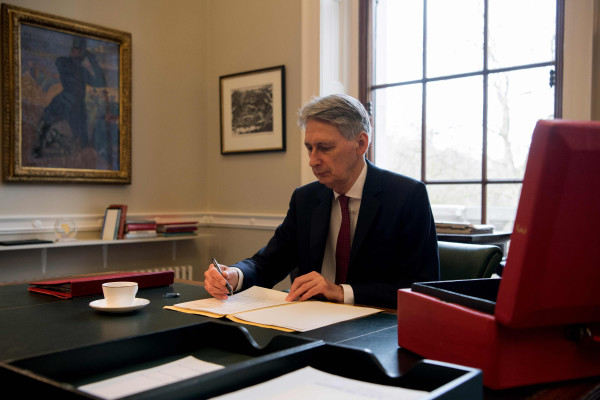

An increase in the upper earnings limit for National Insurance contributions wipes out half of the reduction some had hoped for from the increasing threshold for higher rate income tax, Royal London warned.
In his Budget speech yesterday (29 October), the Chancellor of the Exchequer Philip Hammond announced the starting point for higher rate income tax would increase from £46,350 to £50,000 next April.
This will reduce the income tax rate on the slice of pay between £46,350 to £50,000 from 40 per cent to 20 per cent.
But a policy paper published alongside the Budget explained the National Insurance contributions (NIC) upper profits and upper earnings limits were aligned to the higher rate threshold so would also increase in 2019 to 2020.
According to analysis from Royal London, this means that instead of paying a NICs rate of 2 per cent - currently payable on earnings above the upper earnings limit - workers will pay the full rate of 12 per cent on this same slice of earnings, an increase of 10 percentage points.
Royal London said the combined effect of these two changes was a reduction in the income tax rate by 20 percentage points but an increase in the NIC rate by 10 percentage points, meaning the net saving was only 10 per cent of this band of earnings.
Sir Steve Webb, director of policy at Royal London and former pensions minister, said the Chancellor was "well within his rights to increase the bands over which the full rate of NI contributions is payable".
He said: "But as this wipes out half of the gain for higher earners of raising the starting point for higher rate income tax, he should have come clean and mentioned this in the Budget speech rather than leave it in the Budget small print."
The rise in the higher rate tax threshold to £50,000 will also have an impact on pension tax relief.
Steven Cameron, pensions director at Aegon, explained some people will become basic rate taxpayers which will affect pension saving as savers receive tax relief, or a government top-up, based on their highest marginal income tax rate of 20, 40 or 45 per cent.
He said: "For those moving down into the basic rate tax bracket, their government top-up is halved meaning less may be going into their pension."
Mr Cameron also noted the higher rate tax threshold between Scotland and the rest of the UK continued to diverge and if the Scottish threshold remained at its current level of £43,000, it would be £7,000 behind the rest of the UK.
He added: "This, along with the higher rates of Scottish income tax, means that more people on the same earnings but resident in different parts of the UK will not only pay different levels of income tax, but also receive different pension tax relief on their contributions."
David Hearne, director and chartered financial planner at Satis Asset Management, said: "This shocked me too, and I only realised when I tried the BBC budget calculator this morning.
"This is clever politics from the Chancellor. Increasing the allowance that people know about, while taking half of the gains back again by increasing the allowance they know less about."
maria.espadinha@ft.com



